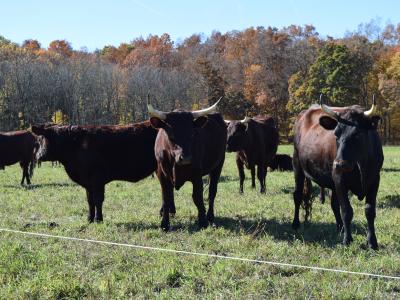From Primates to Pastures, Charting a Flight Path for Conservation
Paul Buzzard’s conservation career spans continents, species, and systems—from observing monkeys in the rainforests of Ivory Coast and snow leopards in Nepal to advising farmers on soil health in southeast Michigan. As a Conservation Technician with the Washtenaw County Conservation District (WCCD), Paul brings a rare blend of global ecological knowledge and local land-based action to every farm visit.
But before his work with WCCD or his leadership at the Detroit Zoo, Paul was just a kid growing up on a family farm in southern Illinois, fascinated by animals and the landscapes they call home.
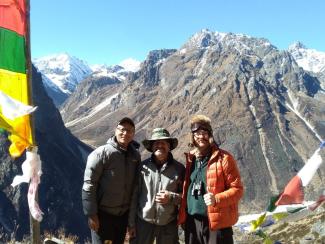
Paul Buzzard, on the right, in Nepal
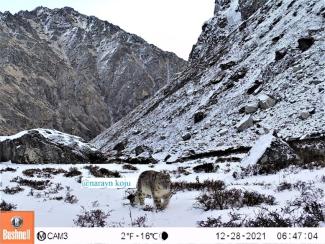
Snow leopard captured on trail camera.
Wildlife to Working Lands
Paul earned his Ph.D. studying primate behavior and ecology in Africa and went on to a career in wildlife conservation, including serving as Field Conservation Officer for the Detroit Zoological Society. There, he worked on initiatives to protect endangered species and restore critical habitats across the globe.
His career eventually brought him back to the Midwest, where he learned more about the importance of habitat restoration and the conservation potential of regenerative agriculture, especially agroforestry, which provided a nice link for Paul between wildlife conservation and agricultural land stewardship. Agroforestry combines trees and shrubs with crops and/or livestock on the same land, aiming to create more productive, diverse, and sustainable agricultural lands.
Eager to implement these regenerative agriculture principles firsthand and get back to his agricultural roots, Paul co-founded Detroit Flight Path Farm with partner Kim Williams-Guillén in Romulus, just two miles south of the Detroit Metro Airport. The name is both literal and aspirational.
“Like the planes overhead, we have a flight path too—a vision for transforming this land from conventional row crops into a regenerative, perennial system,” Paul explains.
Flight Path: A Vision for Sustainable Agriculture
The 20-acre farm includes 11 acres of cropland, a 1-acre orchard, a 5.5-acre oak-hickory forest, and 2.5 acres of an agroforestry system that he is particularly proud about. Since purchasing the property in 2017, Paul and Kim have focused on integrating native fruit and nut trees and diversified pasture to humanely raise pigs, sheep, chickens, ducks and turkeys in a resilient silvo-pastural system. Their work is grounded in the latest agroecological research and guided by a strong commitment to restoring soil, enhancing biodiversity, and modeling sustainable food systems for the Detroit region.
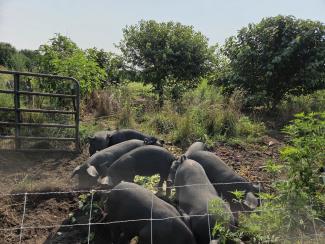
Heritage pigs grazing an agroforestry installation at Flight Path Farm
Connecting Farmers with Conservation
At WCCD, Paul supports farmers and landowners through the Michigan Agriculture Environmental Assurance Program (MAEAP) and the Michigan Climate Smart Farms Project, providing technical assistance, conservation planning, and connection to federal programs through NRCS.
“Every landscape has a conservation role to play—whether it’s a 5-acre homestead or a 500-acre grain farm,” Paul says. “We’re here to help people adapt to climate change while caring for their land.”
His ability to bridge scientific research and on-the-ground practice makes him a vital resource for farmers across the District—and a strong advocate for regenerative farming.
He is particularly hopeful about hearing from farmers who have been using regenerative practices like cover crops for a long time and in some cases even starting to use livestock to profitably terminate the cover crops. Paul is also excited to work with farmers who want to get started in cover crops and other regenerative practices.
Looking Ahead
With experience in both wildlife protection and sustainable food systems, Paul sees conservation as a shared responsibility—and a powerful opportunity, and he is very hopeful about the future of conservation in Michigan — especially regarding the role of regenerative agriculture. We're learning more and more about the importance of building soil health with agroforestry as well as incorporating diverse cover crops and minimal tillage. Plus, building soil health and restoring the soil ecosystem not only helps with the bottom line of farmers through lower input costs but also helps enhance biodiversity and sequesters carbon to have a profound impact on our environment.
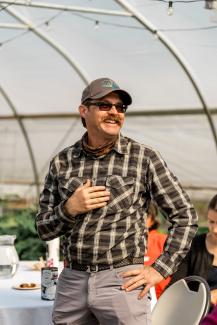
Paul Buzzard at a Coffee and Conservation event at Gateway Farm, 2024
Quick Picks: Paul’s Conservation Snapshot
Favorite conservation practice: wetland restoration
Best thing about working with farmers: Learning more about the diversity of farming in Michigan and the diversity of farmers from multi-generational operations to people just starting out
Favorite season at Flight Path Farm: The Fall, harvest time and football: Go Lions and Go Illini !
One resource you recommend to all new land stewards: WCCD!
Final Thought
From observing wildlife in remote jungles to helping Michigan farmers grow with nature, Paul Buzzard’s journey is a testament to the idea that all conservation is connected. Whether through forests, farms, or food systems, his work continues to chart a meaningful—and hopeful—flight path forward.
Local conservation districts play a critical role in protecting our land, water, and farms. Your support can help us continue this essential work during uncertain times. Please consider making a donation to keep conservation on the ground in our community.
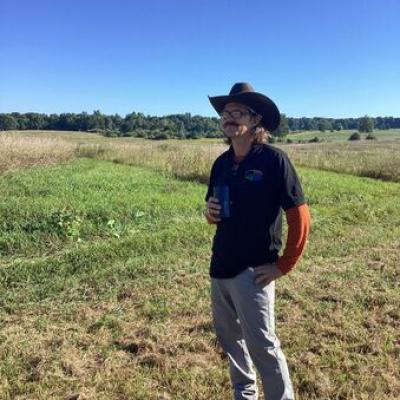
Paul Buzzard
He/Him
Conservation Technician
